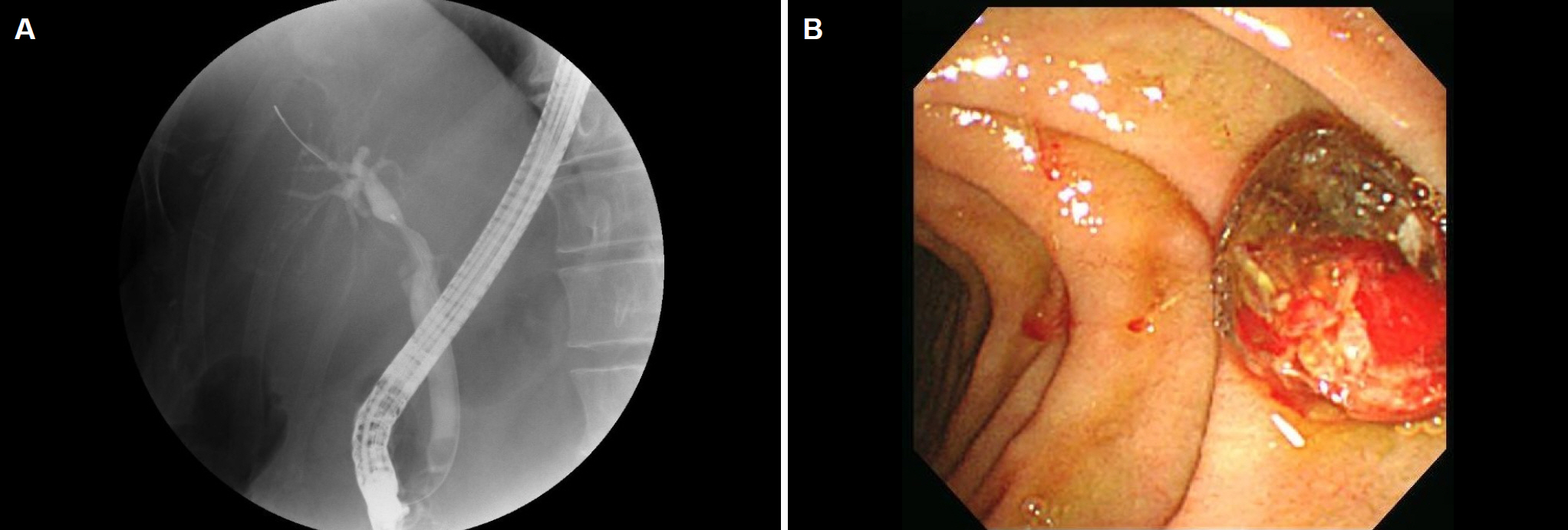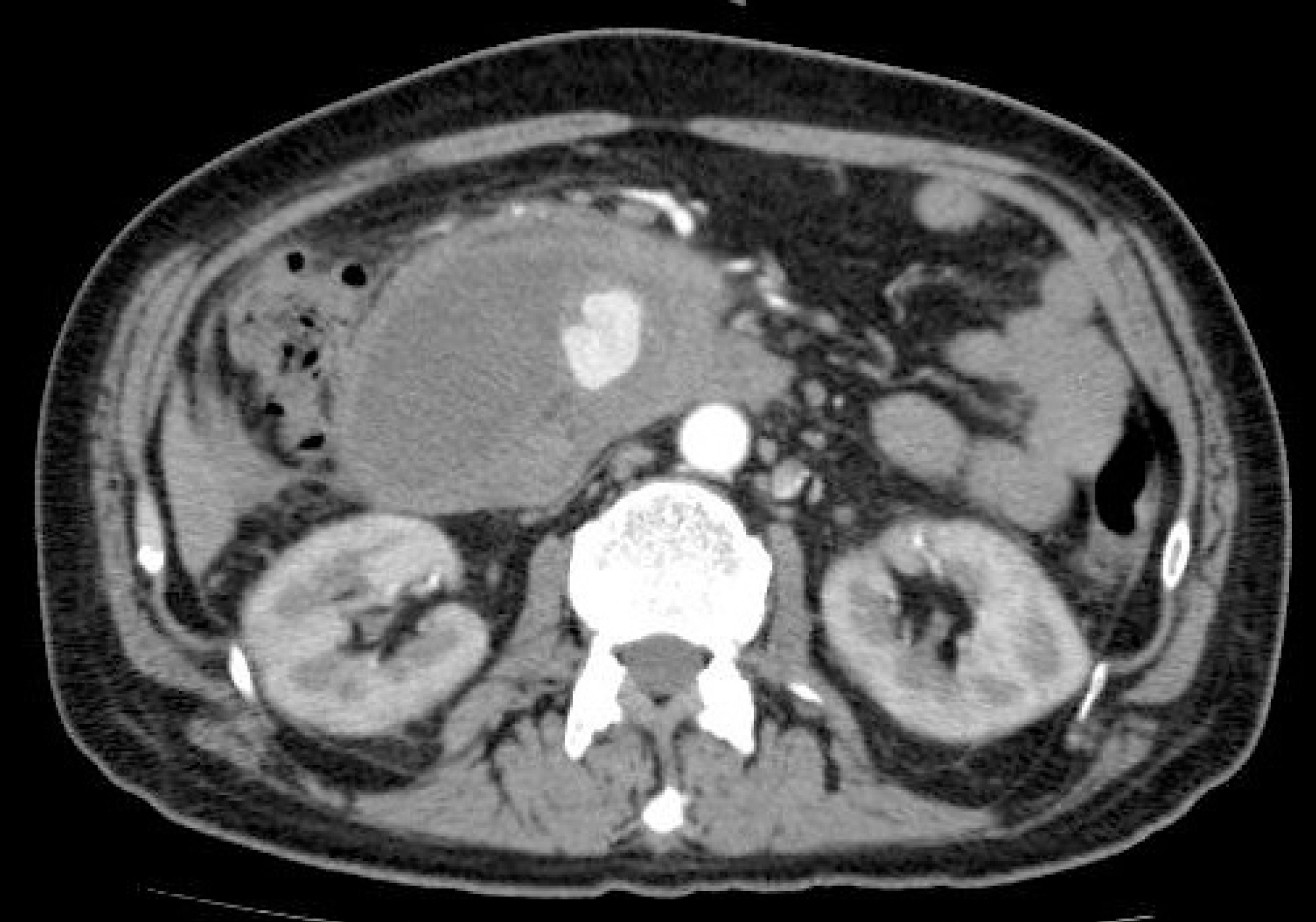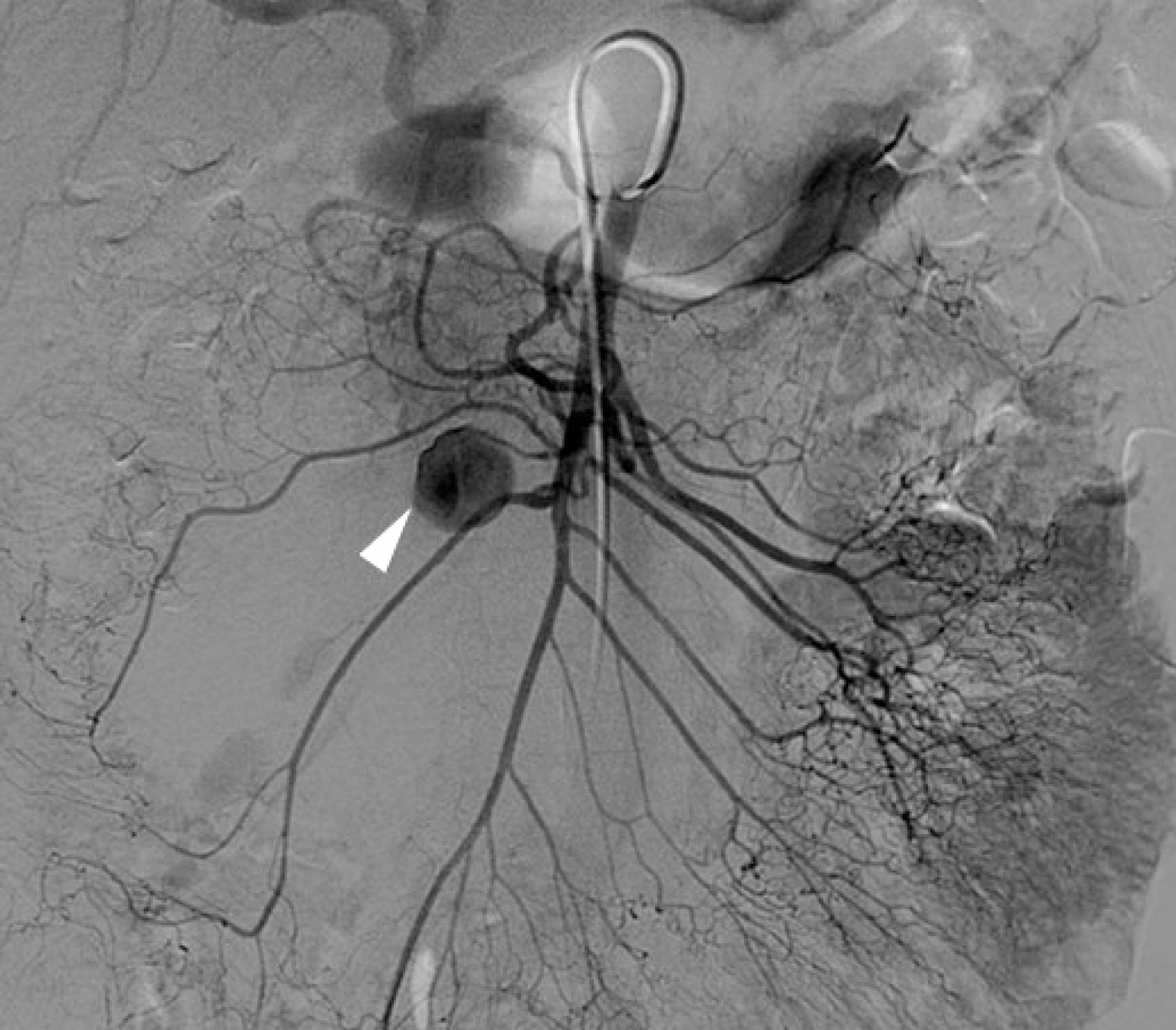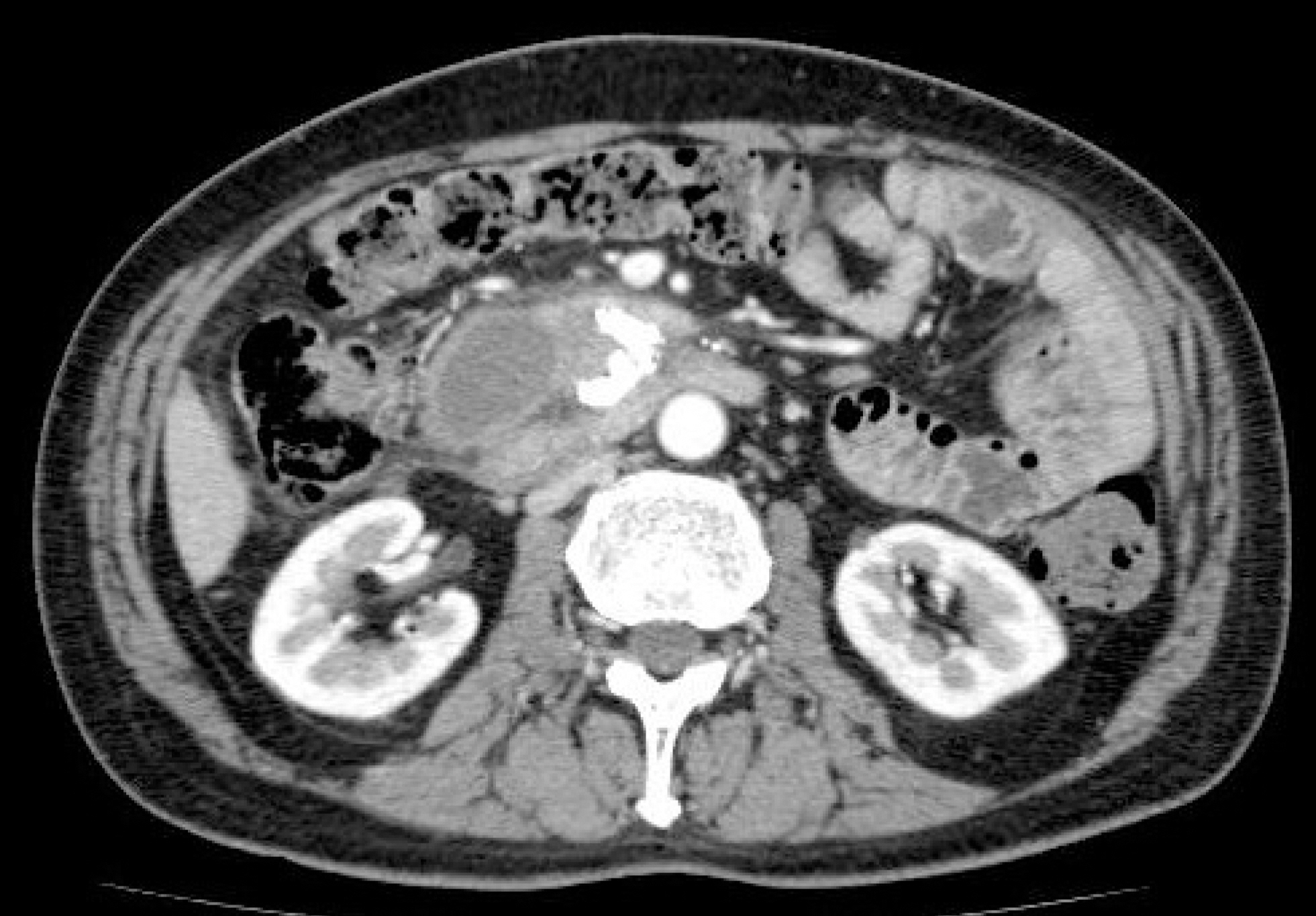Korean J Gastroenterol.
2020 Mar;75(3):162-166. 10.4166/kjg.2020.75.3.162.
Visceral Artery Pseudoaneurysm Rupture after Endoscopic Retrograde Cholangiopancreatography
- Affiliations
-
- 1Department of Internal Medicine, Inje University Seoul Paik Hospital, Seoul, Korea. ptymd@hotmail.com
- KMID: 2471900
- DOI: http://doi.org/10.4166/kjg.2020.75.3.162
Abstract
- A visceral artery pseudoaneurysm after ERCP is a rare adverse event that is potentially life-threatening. Most cases reported previously originated from the peripancreatic arteries, including the splenic artery, gastroduodenal artery, or pancreaticoduodenal artery. The mechanism of the occurrence of visceral artery pseudoaneurysms after ERCP has not been elucidated until now. Recently, a pseudoaneurysm rupture originating from the superior mesenteric artery after ERCP was observed in a patient without a history of pancreatitis. This paper reports this case with a review of the relevant literature.
MeSH Terms
Figure
Reference
-
References
1. Bergert H, Hinterseher I, Kersting S, Leonhardt J, Bloomenthal A, Saeger HD. Management and outcome of hemorrhage due to arterial pseudoaneurysms in pancreatitis. Surgery. 2005; 137:323–328.
Article2. de Perrot M, Berney T, Bühler L, Delgadillo X, Mentha G, Morel P. Management of bleeding pseudoaneurysms in patients with pancreatitis. Br J Surg. 1999; 86:29–32.
Article3. Udd M, Leppäniemi AK, Bidel S, Keto P, Roth WD, Haapiainen RK. Treatment of bleeding pseudoaneurysms in patients with chronic pancreatitis. World J Surg. 2007; 31:504–510.
Article4. Gaduputi V, Tariq H, Dev A. Visceral arterial aneurysms complicating endoscopic retrograde cholangiopancreatography. Case Rep Gastrointest Med. 2013; 2013:515201.
Article5. Kurita A, Ito T, Kudo Y, Yazumi S. Rupture of a pseudoaneurysm caused by endoscopic papillary large-balloon dilation. Endoscopy. 2015; 47(Suppl 1):UCTN:E532-E533.
Article6. Priya P, Bhattacharyya A, Mohammed S, Gulati S, Ghatak S. Angiographic management of pseudoaneurysms of gastroduodenal artery following endoscopic sphincterotomy. Indian J Gastroenterol. 2016; 35:242–244.
Article7. Flati G, Salvatori F, Porowska B, et al. Severe hemorrhagic complications in pancreatitis. Ann Ital Chir. 1995; 66:233–237.8. Al-Jeroudi A, Belli AM, Shorvon PJ. False aneurysm of the pancreaticoduodenal artery complicating therapeutic endoscopic retrograde cholangiopancreatography. Br J Radiol. 2001; 74:375–377.9. Ding Z, Tang XL, Lin R, Han C, Liu J. ERCP-related complication is not the only cause of GI bleeding in post-liver transplantation patients: a case report. Medicine (Baltimore). 2017; 96:e7716.10. El Hajj II, Sherman S, Pyko M, Lehman GA. Life threatening hemo-bilia after endoscopic retrograde cholangiopancreatography (ERCP). Dig Liver Dis. 2017; 49:1336–1337.
Article11. Mohapatra S, Moradi D, Broder A. A rare cause of post-sphincterotomy bleeding. Gastroenterology. 2017; 153:1193–1194.
Article
- Full Text Links
- Actions
-
Cited
- CITED
-
- Close
- Share
- Similar articles
-
- Coil embolization of ruptured intrahepatic pseudoaneurysm through percutaneous transhepatic biliary drainage
- Pancreaticoduodenal artery pseudoaneurysm-induced hemobilia caused by a plastic biliary stent
- Is Endoscopic Retrograde Cholangiopancreatography Essential for Assessment of Traumatic Pancreas Injury?
- Training in Endoscopy: Endoscopic Retrograde Cholangiopancreatography
- The Management of Endoscopic Retrograde Cholangiopancreatography-Related Duodenal Perforation






